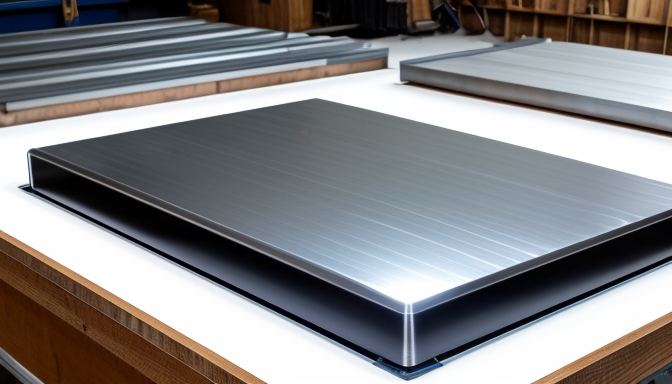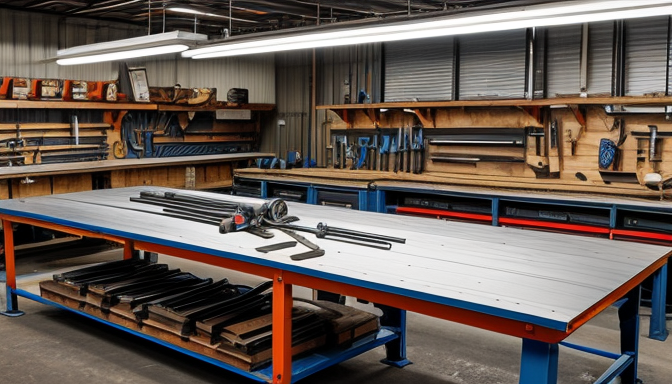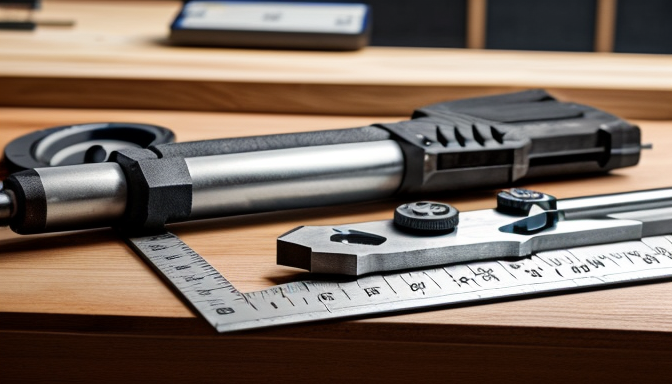The is a fundamental material in the world of construction and manufacturing. Why is it so important? Well, this type of steel is known for its versatility and strength, making it a go-to choice for many projects. Whether you’re building a bridge, a building, or even machinery, S235JR steel sheets are often part of the equation. They provide the durability needed to withstand various conditions while remaining cost-effective.
But what makes S235JR stand out? First, it’s about the mechanical properties. These sheets are designed to offer excellent weldability and formability. This means they can be easily shaped and joined together, making them ideal for complex structures. Additionally, they have a good balance of strength and ductility, which is essential in maintaining structural integrity under load.
Now, let’s talk about applications. S235JR steel sheets are used in a variety of industries, including:
- Construction: For beams, columns, and frames.
- Manufacturing: In machinery and equipment.
- Automotive: For body panels and structural components.
- Shipbuilding: For hulls and other structural parts.
This wide range of applications highlights the importance of understanding the key aspects of S235JR steel sheets, such as their price, weight, and sizes. Knowing these factors can help you make informed decisions when planning your next project.
In summary, the S235JR steel sheet is more than just a piece of metal. It’s a crucial component that supports countless structures and products. Understanding its properties and applications can empower you to utilize it effectively in your work. So, whether you’re a seasoned engineer or a DIY enthusiast, knowing about S235JR steel sheets can enhance your projects significantly.
S235JR Steel Sheet Price
Understanding the **price** of S235JR steel sheets is essential for anyone involved in construction or manufacturing. It’s not just about picking a number; it’s about knowing what influences that number. The price can fluctuate based on various factors, and being aware of these can help you make informed decisions.
First off, let’s talk about **market demand**. When the demand for construction materials rises, so do the prices. Think of it like a popular concert ticket. The more people want to go, the higher the price climbs. Similarly, if there’s a surge in construction projects, expect to see S235JR steel sheet prices reflecting that demand.
Another factor is the **raw material costs**. S235JR steel is made from iron, and the price of iron ore can significantly impact the cost of steel sheets. When iron prices go up, manufacturers often pass those costs onto consumers. It’s like making a sandwich; if the price of bread goes up, your sandwich will cost more too.
Let’s not forget about **geographical location**. Prices can vary widely depending on where you are buying the steel. In some regions, transportation costs can add a hefty sum to the final price. For instance, if you’re in a remote area, the cost to deliver S235JR sheets can be higher than in a city with easy access to suppliers.
To give you a clearer picture, here’s a simple table showing a rough estimate of prices based on different factors:
| Factor | Price Range (per ton) |
|---|---|
| Standard Market Price | $500 – $700 |
| High Demand Period | $700 – $900 |
| Remote Location | $800 – $1000 |
Now, let’s talk about **quality**. Higher quality steel often comes at a premium price. If you’re looking for S235JR sheets that meet strict standards, you might pay a bit more. But consider this: investing in quality can save you money in the long run. Think of it as buying a sturdy pair of shoes. You might pay more upfront, but they’ll last longer and keep your feet comfortable.
In conclusion, knowing the **price** of S235JR steel sheets is about more than just numbers. It’s about understanding the market, the materials, and the quality. By keeping an eye on these factors, you can better manage your budget and make smart purchasing decisions. So, whether you’re planning a small project or a large construction job, being informed about prices can make all the difference.

S235JR Steel Sheet Weight
The weight of S235JR steel sheets is a crucial factor in construction and manufacturing. Why? Because it directly impacts structural design and transportation logistics. When you’re planning a project, understanding the weight specifications can save you time and money. Imagine trying to lift a heavy steel sheet without knowing its weight. It could lead to unexpected challenges.
Typically, the weight of S235JR steel sheets can vary based on their dimensions and thickness. For instance, a thicker sheet will weigh more than a thinner one. This is important to consider, especially when you’re calculating load-bearing capacities or planning for transportation. The weight is usually measured in kilograms per square meter (kg/m²), and it can be calculated using the formula: Weight Thickness × Density × Area.
To give you a clearer picture, here’s a simple breakdown of the weight for various thicknesses of S235JR steel sheets:
| Thickness (mm) | Weight (kg/m²) |
|---|---|
| 1.0 | 7.85 |
| 2.0 | 15.70 |
| 3.0 | 23.55 |
| 4.0 | 31.40 |
As you can see, the weight increases with thickness. This is a vital consideration for engineers and architects. They must ensure that the structural components can handle the weight without compromising safety. Transporting these sheets also requires careful planning. Overloading a vehicle can lead to accidents or damage.
In practical terms, this means that when you’re ordering S235JR steel sheets, you should always check the specifications. Knowing the weight helps you choose the right equipment for lifting and moving. It also aids in making informed decisions about the materials you’ll use in your projects.
In conclusion, understanding the weight of S235JR steel sheets isn’t just a technical detail. It’s a fundamental aspect that influences design, safety, and logistics. So, the next time you’re involved in a project that requires these materials, keep the weight in mind. It could make all the difference!
S235JR Steel Sheet Properties
The S235JR steel sheet is a versatile material, widely used in construction and manufacturing. Its mechanical and chemical properties make it ideal for various applications. But what exactly sets it apart from other steel grades? Let’s dive into the details!
First off, the mechanical properties of S235JR steel are impressive. It boasts a yield strength of around 235 MPa and a tensile strength ranging from 360 to 510 MPa. This means it can withstand significant stress without deforming. Imagine trying to bend a thick piece of paper versus a sturdy cardboard; the cardboard holds its shape better, just like S235JR does under pressure.
Additionally, this steel grade has excellent ductility. Ductility refers to how much a material can stretch before breaking. S235JR can elongate up to 20% in a tensile test. This property is crucial for applications where flexibility is necessary, like in structural beams that need to absorb energy during an earthquake.
Now, let’s talk about its chemical properties. S235JR is primarily made of iron, with small amounts of carbon, manganese, and silicon. The chemical composition typically includes:
| Element | Percentage |
|---|---|
| Carbon (C) | ≤ 0.20% |
| Manganese (Mn) | 0.60 – 0.90% |
| Silicon (Si) | ≤ 0.40% |
| Phosphorus (P) | ≤ 0.04% |
| Sulfur (S) | ≤ 0.04% |
This composition allows S235JR to resist corrosion and oxidation, making it suitable for outdoor applications. Think about it: a material that can stand up to the elements is a must for bridges and buildings. It’s like choosing a raincoat that keeps you dry in a downpour.
Moreover, S235JR is known for its weldability. This means it can be easily welded without compromising its strength. Many projects require joining pieces together, and having a material that can handle welding well is a big plus. It simplifies construction and reduces costs.
In summary, the properties of S235JR steel sheets make them a reliable choice for many industries. With their strong mechanical characteristics, favorable chemical composition, and ease of use, they stand out in the world of materials. Whether you’re building skyscrapers or crafting machinery, S235JR steel sheets have got your back!

S235JR Steel Sheet Sizes
When it comes to S235JR steel sheets, size really does matter. Choosing the right dimensions is crucial for any construction or manufacturing project. You don’t want to end up with sheets that are too small or too large for your needs. So, what are the standard sizes available on the market? Well, let’s break it down.
Typically, S235JR steel sheets come in a variety of thicknesses and lengths. The most common thickness ranges from 1 mm to 20 mm, while lengths can vary significantly. Standard widths are usually around 1000 mm to 2000 mm. However, many manufacturers offer customized sizes to meet specific project requirements. This flexibility is a boon for engineers and builders who often have unique specifications to meet.
For example, if you’re working on a project that requires a particular size, you can often request sheets tailored to your needs. This can save time and reduce waste. But, how do you know what size you need? It often depends on the application:
- Construction: Larger sheets are typically used for structural applications.
- Manufacturing: Smaller sizes may be sufficient for components or parts.
- Fabrication: Custom sizes can be essential for bespoke projects.
To give you a clearer picture, here’s a simple table showing standard sizes:
| Thickness (mm) | Width (mm) | Length (mm) |
|---|---|---|
| 1 | 1000 | 2000 |
| 5 | 1250 | 2500 |
| 10 | 1500 | 3000 |
| 20 | 2000 | 6000 |
It’s essential to consult with your supplier to confirm the exact sizes they offer, as these can vary. Remember, the right size not only affects the structural integrity of your project but also impacts the overall cost. If you order sheets that are too large, you’re wasting money. On the flip side, if they’re too small, you might need to order additional sheets, leading to delays and increased expenses.
In conclusion, understanding the sizes of S235JR steel sheets is a vital step in ensuring your project runs smoothly. Always consider your specific needs and consult with professionals to make informed decisions. After all, the right size can make all the difference!
Frequently Asked Questions
- What is S235JR steel sheet used for?
S235JR steel sheets are widely used in construction and manufacturing due to their excellent weldability and machinability. They are often found in structural applications like beams, columns, and frames.
- How is the price of S235JR steel sheets determined?
The price of S235JR steel sheets can fluctuate based on several factors, including market demand, raw material costs, and global economic conditions. It’s essential to stay updated on market trends to budget effectively for your projects.
- What are the typical weights of S235JR steel sheets?
The weight of S235JR steel sheets varies depending on their thickness and dimensions. Generally, the weight can be calculated using the formula: weight density × volume, where the density of steel is approximately 7.85 g/cm³.
- What mechanical properties does S235JR steel have?
S235JR steel is known for its good tensile strength, yield strength, and ductility. It typically has a yield strength of 235 MPa and is well-suited for various engineering applications, making it a popular choice in the industry.
- Are there standard sizes available for S235JR steel sheets?
Yes, S235JR steel sheets come in standard sizes, but customization options are also available based on specific project requirements. Common thicknesses range from 1 mm to 20 mm, and lengths and widths can vary widely.
- Can S235JR steel sheets be easily welded?
Absolutely! One of the significant advantages of S235JR steel is its excellent weldability, which makes it ideal for fabrication and construction projects where strong joints are crucial.
